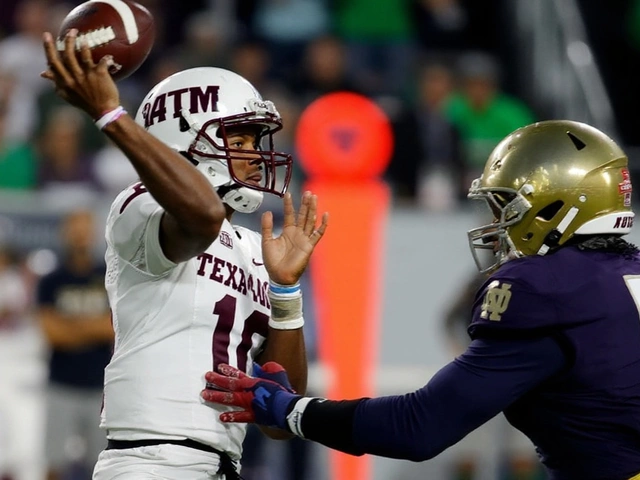During the final minutes of an international friendly between Mexico national football team and Uruguay national football team, a lone fan from Mexico sprinted onto the pitch at Empower Field at Mile High in Denver, Colorado, sending the crowd into a mix of gasps, cheers, and stunned silence. The incident, captured by fans and reported by Westword.com on November 16, 2025, occurred during a match whose exact date remains unconfirmed—though it clearly took place after Uruguay and Mexico played to a 0-0 draw in Torreón, Mexico, on November 15. No arrests were reported. No security statements followed. Just a man in a maroon jersey, arms raised, and a stadium holding its breath.
Two Matches, One Country, One Night
Here’s the twist: while Denver buzzed with the unexpected field intrusion, nearly 1,800 miles away in Torreón, Coahuila, the same two teams were wrapping up a tightly contested 0-0 draw at Estadio TSM Corona. That match, officially documented by ESPN and Bolavip, ended with a dramatic last-second save by Uruguay’s goalkeeper Santiago Mele, denying Mexico’s Johan Vásquez a header assisted by Gilberto Mora in the 90+5th minute. It was Mexico’s penultimate game of 2025—and their first visit to Estadio TSM Corona since 2022.
The Denver match, however, exists in a gray zone. No kickoff time. No official broadcast record. No FIFA match code. Only eyewitness accounts and a single news report from Westword.com confirming the fan’s run. This isn’t the first time a pitch invasion has happened during a friendly—remember the 2019 USMNT match in Nashville? Or the 2022 Argentina-Peru clash in Miami? But those had security footage, arrests, and press conferences. Here? Nothing. Just a man who made it 30 yards before being tackled by stadium staff, and a crowd that didn’t boo.
Who Was the Fan? And Why?
The identity of the fan remains unknown. No social media posts have surfaced. No local police reports have been filed. The man, described as wearing a Mexico jersey with the number 10, reportedly ran toward the center circle, waving a small flag before being escorted off. Witnesses say he wasn’t violent—just emotional. "It felt like he was trying to kiss the grass," one fan told Westword. "Like he’d waited his whole life to be on that field."
That emotion isn’t hard to understand. Mexico’s national team, governed by the Federación Mexicana de Fútbol Asociación, A.C. (FMF), has struggled for consistency in recent years. After missing the 2022 World Cup quarterfinals, the team has been rebuilding under new leadership. Friendlies like these are more than exhibition—they’re identity checks. For many Mexican fans in the U.S., especially in cities like Denver with growing Mexican-American populations, these matches are sacred.
Empower Field at Mile High, home of the Denver Broncos, holds nearly 76,000 seats. It’s rarely used for soccer. But in 2025, it became a rare cross-border stage. The FMF has been actively scheduling U.S. friendlies to engage the diaspora. This one? Likely part of a broader strategy ahead of potential matches against Paraguay—though, as Goal.com noted on November 14, that fixture remains unofficial.

Security Gaps and Fan Passion
What’s alarming isn’t the invasion itself—it’s the silence that followed. No press release from Major League Soccer (which doesn’t even run the event). No statement from the United States Soccer Federation. No mention of whether the fan was banned from future events. Even ESPN, which covered the Torreón match in exhaustive detail, didn’t mention Denver’s incident in its post-match roundup.
That silence speaks volumes. It suggests either a lack of protocol—or a deliberate choice to avoid turning a passionate moment into a scandal. In countries like Mexico and Brazil, pitch invasions are sometimes treated as acts of devotion. In the U.S., they’re usually treated as crimes. But here, in a city where fans of the Broncos, Avalanche, and Rapids all bleed loyalty, maybe the line is blurrier.
What’s Next for El Tri?
Mexico’s next step is unclear. With the 2026 World Cup—hosted jointly by the U.S., Canada, and Mexico—just 18 months away, every friendly is a scouting mission. The team’s November 15 lineup in Torreón featured young talents like Jesús Orozco and Fidel Ambríz, both substituted in the final 20 minutes. The fact that 11 players were rotated suggests coach Gerardo Martino is testing depth. But without a confirmed opponent, the team’s preparation feels fragmented.
Paraguay remains the most likely next opponent, per Goal.com’s reporting. But if the federation doesn’t lock that in soon, the team risks losing momentum. And if the next U.S. friendly happens without tighter security, another fan might try to run. And next time? Maybe they won’t get caught.

Behind the Scenes: The Quiet Rise of U.S. Soccer Friendlies
Denver isn’t the only non-traditional soccer city hosting these matches. In 2024, Austin, Cincinnati, and even Salt Lake City saw national team friendlies draw crowds of 40,000+. The U.S. is becoming a logistical hub for CONCACAF teams, offering modern venues, large diaspora audiences, and lucrative ticket sales. For Mexico, these games aren’t just about wins—they’re about connection.
Yet, the infrastructure hasn’t caught up. Unlike in Mexico, where pitch invasions are often met with chants and smiles, U.S. stadiums operate under strict liability rules. The lack of a public response after the Denver incident raises questions: Did security underestimate the emotional stakes? Was this treated as a minor disruption—or a missed opportunity to celebrate fan passion?
Frequently Asked Questions
Why wasn’t the Denver match officially scheduled or reported?
The match appears to have been an unofficial, last-minute addition to Mexico’s 2025 schedule. Unlike the Torreón game, which was listed on FIFA’s international window calendar, the Denver match lacked a formal announcement, broadcast rights, or match code. This is common for teams testing fan engagement in new markets—but it leaves no official record, making post-match analysis and security reviews nearly impossible.
Could the fan face legal consequences?
Legally, yes—trespassing on a sports field in Colorado is a misdemeanor punishable by fines or jail time. But with no police report filed and no public statement from venue security, it’s unlikely charges were pursued. Authorities may have opted for a warning or ban, especially since the fan showed no aggression. Many U.S. stadiums now use "first offense" policies for emotional pitch invasions, particularly from loyal fans.
How does this compare to other pitch invasions in U.S. soccer?
In 2019, a fan ran onto the field during a U.S.-Panama match in Nashville and was arrested; in 2021, a fan at a U.S.-Jamaica game in Cincinnati was escorted out without charges. The difference? Context. In Denver, the fan was Mexican, the opponent was Uruguayan, and the crowd reacted with cheers—not outrage. That cultural nuance likely influenced the lack of escalation. U.S. soccer venues are learning to distinguish between disruption and devotion.
Why is Mexico playing friendlies in the U.S. instead of just Mexico?
The Mexican Football Federation has prioritized engaging its massive U.S. diaspora—over 37 million Mexican-Americans live in the U.S., many of whom are die-hard fans. Matches in cities like Denver, Los Angeles, and Houston sell out faster than those in smaller Mexican stadiums. Plus, ticket revenue and sponsorships are higher. It’s a smart business move, even if it creates logistical and security gaps.
Will the field invasion affect future matches in Denver?
Unlikely. The lack of official response suggests the incident was seen as a one-off expression of passion, not a security threat. With the 2026 World Cup approaching, Denver is a prime candidate for future international matches. If anything, the event may have proven the city’s strong fan base. Expect more Mexican and CONCACAF games there—just with better crowd barriers next time.
What was the significance of the 0-0 draw in Torreón?
The 0-0 result in Torreón was a sign of Mexico’s cautious, rebuilding phase. Without key players like Hirving Lozano and Raúl Jiménez playing full 90 minutes, the team prioritized tactical discipline over attacking flair. Uruguay, meanwhile, fielded a mix of veterans and youth, signaling their own transition ahead of Copa América. The draw reflected two teams in flux—neither dominant, both preparing for bigger challenges ahead.








